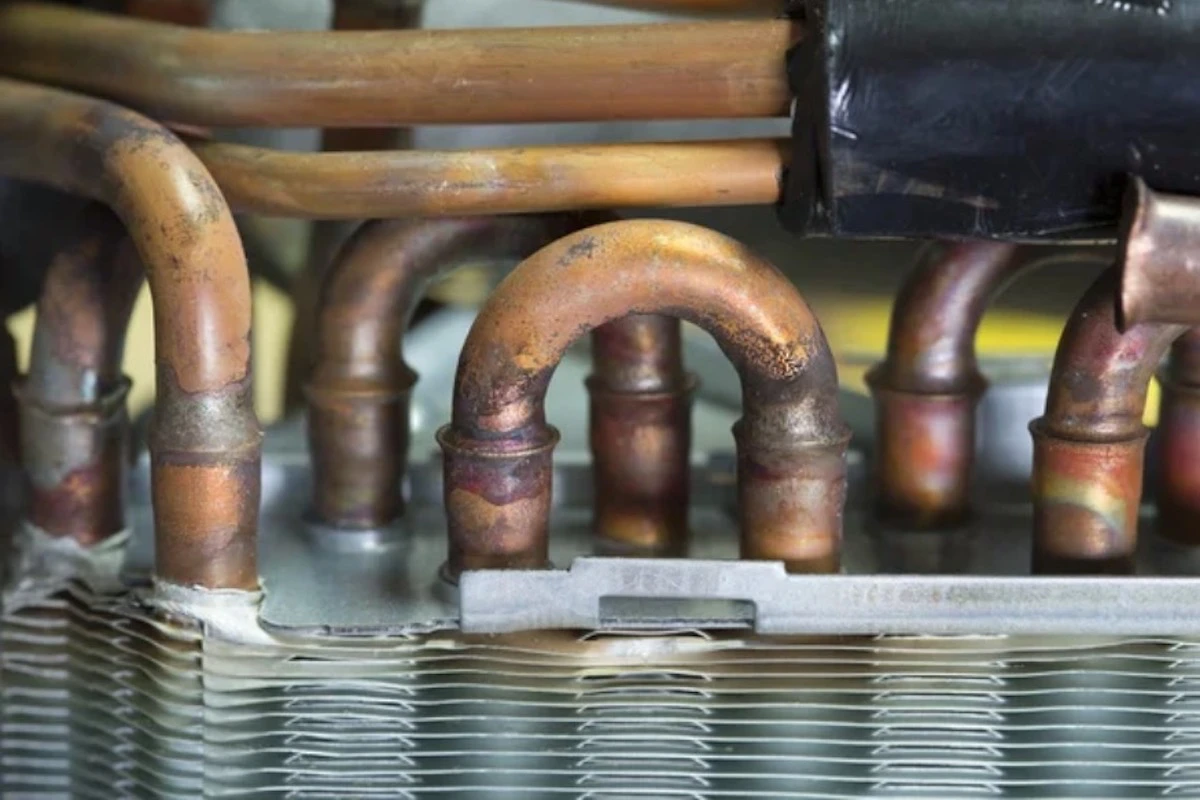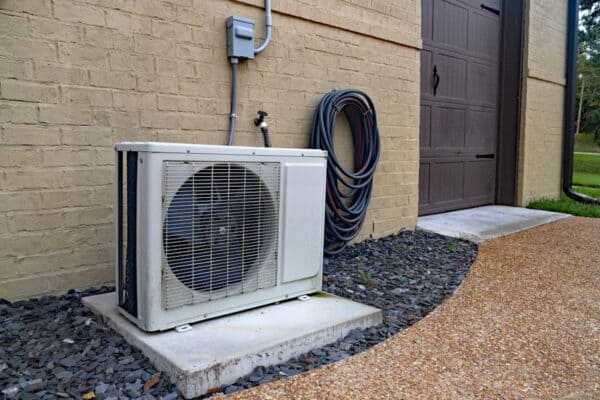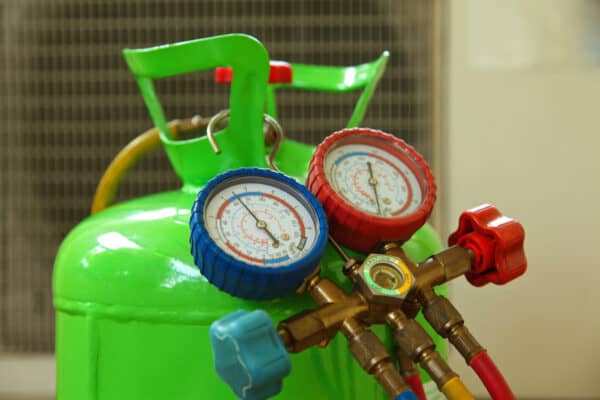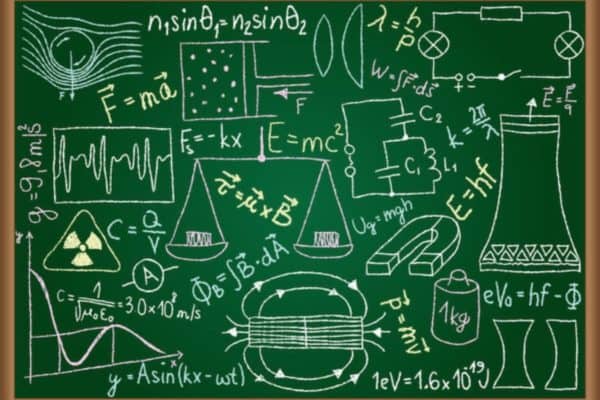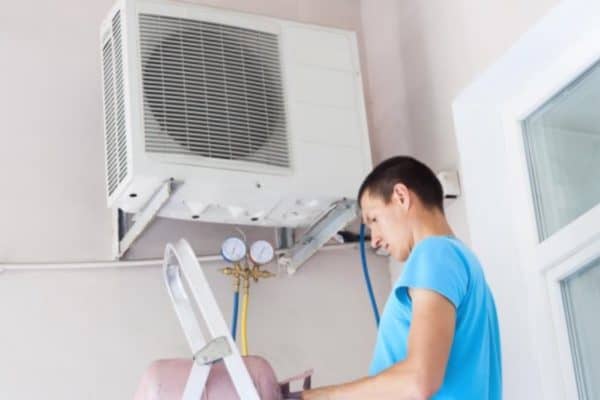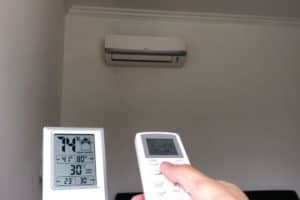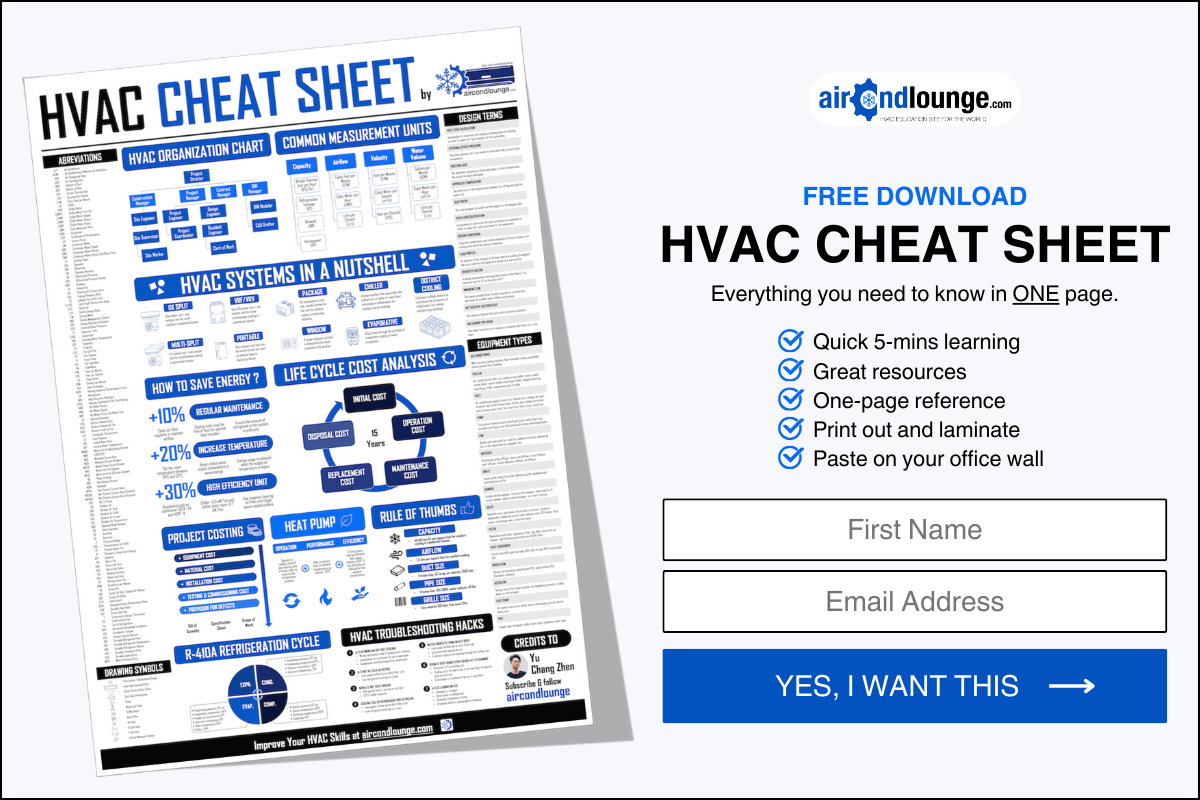What is the Temperature of Cooling Coils?
Cooling coils have specific design and operating temperatures. They must be cold enough to dehumidify the air but not too cold to cause freezing. So, what should be the temperature of a cooling coil?
For comfort cooling applications, the temperature of the air leaving the cooling coil or off coil temperature should be around 13°C (55°F). If the off coil temperature is too high, the room may not be sufficiently cooled and dehumidified.
Problems with insufficient cooling and dehumidification are often associated with the off coil temperature being too high. However, other cooling coil temperatures must also be examined.
Off Coil Temperature
Off coil temperature is the temperature of the air leaving the cooling coil. Off coil temperature is also known as leaving air temperature or supply air temperature.
Generally, the off coil temperature is between 12°C (53.6°C) and 14°C (57.2°F) for standard cooling and dehumidification. However, during startup, the off coil temperature can be as high as 18°C (64.4°F) or even 20°C (68°F) depending on the initial room temperature.
The off coil temperature depends on the on coil temperature which is the temperature of the air entering the cooling coil. The higher the on coil temperature, the higher the off coil temperature.
On Coil Temperature
On coil temperature is the temperature of the air entering the cooling coil. On coil temperature is also known as entering air temperature or return air temperature.
Cooling coils are constructed and tested according to the AHRI standards. Based to the AHRI rated conditions, the on coil temperature is 27°C (80°F) dry bulb and 19°F (27°C) wet bulb.
The Celsius and Fahrenheit are rounded to match the respective practice.
However, in practice, the on coil dry bulb temperature is between 24°C (75°F) and 26°C (79°F) depending on the temperature setpoint.
Theoretically, the on coil temperature should be equal to the room temperature. However, some air conditioning systems have a long return duct which causes the actual on coil temperature to be 1 to 2°C higher than the room temperature.
The off coil temperature depends on the on coil temperature because most cooling coils are designed to have a specific delta T. In other words, there is a specific range of temperature differences between the on coil and off coil temperature.
Cooling Coil Temperature Difference
The temperature difference across a cooling coil is known as delta T (ΔT). Given that the airflow is constant, the greater the delta T, the higher the capacity of the cooling coil.
Q = mcΔT
From the above heat transfer equation, if the mass flow rate, which is the product of airflow and density is fixed, increasing the ΔT will increase the Q which is the capacity of the cooling coil.
Traditional evaporator coils are designed at a delta T of between 10-12°C (18-21°F). Meaning, if the on coil temperature is 24°C (75°F), the off coil temperature should be around 12-14°C (54-57°F).
Initially, the room temperature may be around 30°C (86°F). As the air conditioner starts to operation, the on coil temperature or return air temperature is around 30°C (86°F) as well. So, the off coil temperature or supply air temperature is expected to be around 20°C (68°F).
However, some air conditioners are designed to have a higher delta T across their evaporator coil. For example, mini-split air conditioners typically have a delta T from 10°C (18°F) up to 20°C (29°F). Depending on the outdoor temperature, the off coil temperature can be as low as 10°C (50°F).
Water Cooling Coil Temperature
In commercial buildings, chilled water air handling units (AHUs) and fan coil units (FCUs) typically have cooling coils that are selected as follows:
| Cooling Coil Temp. | Dry Bulb Temp. | Wet Bulb Temp. |
|---|---|---|
| On Coil | 27°C (80°F) | 19°C (67°F) |
| Off Coil | 13°C (55°F) | 13°C (55°F) |
Since cooling coils are rated based on the AHRI standards, the on coil temperature follows the AHRI rated conditions. As for the off coil temperature, it is generally specified at 13°C (55°F) which is also the dew point temperature of the air at 24°C (75°F), 50% relative humidity.
If the indoor design conditions is different, the off coil temperature needs to be changed.
For example, if the desired room temperature is 21°C (70°F) at 50% relative humidity, the dew point temperature becomes 10°C (50°F) and so does the off coil temperature.
Both the dry bulb and wet bulb of the off coil temperature are the same which means that the relative humidity is 100%. However, this won’t add humidity to the room because the actual moisture content is reduced. As the supply air mixes with the room air, the relative humidity will rise.
Learn more about humidity and moisture content in this article using the psychrometric chart.
Cooling Coil Approach Temperature
Cooling coil approach temperature is the difference between the water/refrigerant entering the cooling coil and the temperature of the air leaving the cooling coil.
A typical AHU cooling coil may have an approach temperature of around 4°C (7°F). So, if the leaving air temperature is 13°C (55°F), the entering chilled water temperature is averagely around 9°C (48°F).
The temperature of the chilled water increases as it goes through the evaporator coil. So, the entering temperature is usually set at 6.7°C (44°F) and the leaving temperature is 12.2°C (54°C) while the average temperature is 9.5°C (49°F).
See also: Chiller and Cooling Tower Approach Temperature.
For residential air conditioners that use R410A refrigerant, the approach temperature is also around 4°C (7°F). So, if the supply air temperature is 13°C (55°F), the refrigerant evaporating temperature is around 9°C (48°F) and the corresponding refrigerant pressure is around 138 psi.
That’s why low suction pressure is one of the causes of coil freezing.
Cooling coil freeze at below 0°C (32°F). If the refrigerant evaporating temperature is lower than -6°C (21°F), the coil will inevitably freeze. At such a low refrigerant evaporating temperature, the suction pressure is around 80 psi only.
In a chilled water system, high chilled water temperature will lead to high off coil temperature. If the off coil temperature is 17°C (62.6°F), increasing the airflow may keep the room temperature low but not the humidity level.
100% Outdoor Air Cooling Coil Temperature
The temperature of the cooling coil used for comfort cooling is different from the temperature of the cooling coil used to treat outdoor air.
PAHUs or pre-cool air handling units are used to treat outdoor air. The cooling coil entering air temperature (on coil temperature) for PAHUs is depending on the outdoor design conditions. For instance, in Malaysia, the outdoor design conditions can be selected at 35°C (95°F) dry bulb and 28°C (82°F) wet bulb.
The leaving air temperature (off coil temperature) of 100% outdoor air cooling coils is depending on the limitation of the dehumidifier as well as the on coil temperature of normal AHUs. An example of the off coil temperature in a PAHU with a heat pipe as the dehumidifier is 21°C (70°F) dry bulb and 19°C (66°F) wet bulb.
Lastly, consider my HVAC Begin (eBook) if you’re a beginner and you want to have a foundational knowledge in HVAC. But, if you have a year or two of experience, then I would suggest you consider my HVAC Basics (eBook). Nonetheless, I encourage you enroll in my HVAC Beginner Course: 10 Days to Become Competent in HVAC if you want to equipped yourself with a complete set of basic HVAC skills.
HVAC Beginner Course
Learn the most basics and foundational HVAC skills including cooling capacity calculation, equipment selection, duct sizing, pipe sizing, exhaust fan sizing, controls, electrical and more.
If you have anything to add (or ask) about this topic, leave a comment down below!


